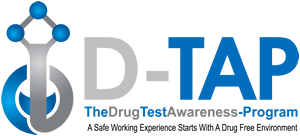Marijuana (THC)
What is Marijuana (THC)?
Marijuana is the most commonly used illicit drug in the United States. A dry, shredded green/brown mix of flowers, stems, seeds, and leaves of the hemp plant Cannabis sativa, it usually is smoked as a cigarette (joint, nail), or in a pipe (bong). It also is smoked in blunts, which are cigars that have been emptied of tobacco and refilled with marijuana, often in combination with another drug. Use also might include mixing marijuana in food or brewing it as a tea. As a more concentrated, resinous form it is called hashish and, as a sticky black liquid, hash oil. Marijuana smoke has a pungent and distinctive, usually sweet-and-sour odor. There are countless street terms for marijuana including pot, herb, weed, grass, widow, ganja, and hash. The main active chemical in marijuana is THC (tetrahydrocannabinol). The membranes of certain nerve cells in the brain contain protein receptors that bind to THC. Once securely in place, THC kicks off a series of cellular reactions that ultimately lead to the high that users experience when they smoke marijuana.
In 2001, over 12 million Americans age 12 and older used marijuana at least once in the month prior to being surveyed. That is more than three quarters (76 percent) of the total number of Americans who used any illicit drug in the past month in 2001. Of the 76 percent, more than half (56 percent) consumed only marijuana; 20 percent used marijuana and another illicit drug; and the remaining 24 percent used an illicit drug or drugs other than marijuana.

Although marijuana is the most commonly used illicit drug in the United States, among students in the 8th, 10th, and 12th grades nationwide its use remained stable from 1999 through 2001(2). Among 8th graders, however, past year use has decreased, from 18.3 percent in 1996 to 15.4 percent in 2001. Also in 2001, more than half (57.4 percent) of 12th graders believed it was harmful to smoke marijuana regularly and 79.3 percent disapproved of regular marijuana use. Since 1975, 83 percent to 90 percent of every 12th grade class surveyed has found it “fairly easy” or “very easy” to obtain marijuana.
Scientists have learned a great deal about how THC acts in the brain to produce its many effects. When someone smokes marijuana, THC rapidly passes from the lungs into the bloodstream, which carries the chemical to organs throughout the body, including the brain.
In the brain, THC connects to specific sites called cannabinoid receptors on nerve cells and influences the activity of those cells. Some brain areas have many cannabinoid receptors; others have few or none. Many cannabinoid receptors are found in the parts of the brain that influence pleasure, memory, thought, concentration, sensory and time perception, and coordinated movement.
The short-term effects of marijuana use can include problems with memory and learning; distorted perception; difficulty in thinking and problem solving; loss of coordination; and increased heart rate. Research findings for long-term marijuana use indicate some changes in the brain similar to those seen after long-term use of other major drugs of abuse. For example, cannabinoid (THC or synthetic forms of THC) withdrawal in chronically exposed animals leads to an increase in the activation of the stress-response system and changes in the activity of nerve cells containing dopamine. Dopamine neurons are involved in the regulation of motivation and reward, and are directly or indirectly affected by all drugs of abuse.
One study has indicated that a user’s risk of heart attack more than quadruples in the first hour after smoking marijuana. The researchers suggest that such an effect might occur from marijuana’s effects on blood pressure and heart rate and reduced oxygen-carrying capacity of blood.
Some of marijuana’s adverse health effects may occur because THC impairs the immune system’s ability to fight off infectious diseases and cancer. In laboratory experiments that exposed animal and human cells to THC or other marijuana ingredients, the normal disease-preventing reactions of many of the key types of immune cells were inhibited. In other studies, mice exposed to THC or related substances were more likely than unexposed mice to develop bacterial infections and tumors.
Depression, anxiety, and personality disturbances are all associated with marijuana use. Research clearly demonstrates that marijuana use has potential to cause problems in daily life or make a person’s existing problems worse. Because marijuana compromises the ability to learn and remember information, the more a person uses marijuana the more he or she is likely to fall behind in accumulating intellectual, job, or social skills. Moreover, research has shown that marijuana’s adverse impact on memory and learning can last for days or weeks after the acute effects of the drug wear off.
Students who smoke marijuana get lower grades and are less likely to graduate from high school, compared to their non-smoking peers. In one study, researchers compared marijuana-smoking and non-smoking 12th-graders’ scores on standardized tests of verbal and mathematical skills. Although all of the students had scored equally well in 4th grade, the marijuana smokers’ scores were significantly lower in 12th grade.
A study of 129 college students found that, for heavy users of marijuana (those who smoked the drug at least 27 of the preceding 30 days), critical skills related to attention, memory, and learning were significantly impaired even after they had not used the drug for at least 24 hours. The heavy marijuana users in the study had more trouble sustaining and shifting their attention and in registering, organizing, and using information than did the study participants who had used marijuana no more than 3 of the previous 30 days. As a result, someone who smokes marijuana once daily may be functioning at a reduced intellectual level all of the time.
Source: Parts reprinted from The National Institute on Drug Abuse (NIDA)








